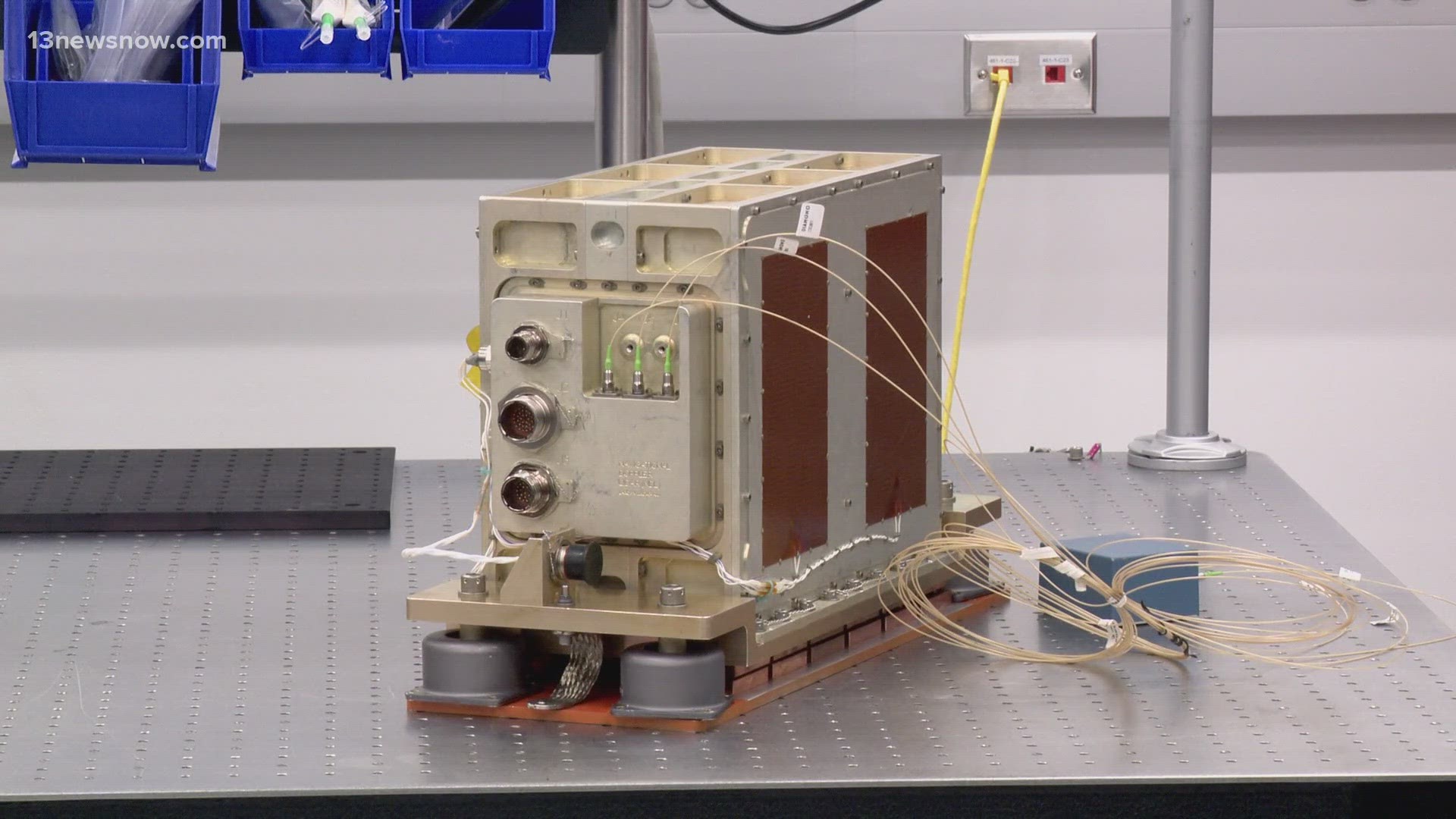HAMPTON, Va. — What may seem like tiny equipment will make a big impact in space. Researchers at NASA Langley developed new technology that will give us a closer look at what’s up above. For nearly 20 years, Farzin Amzajerdian has worked on the Navigation Doppler Lidar or NDL.
“It provides the data that is necessary for navigating the spacecraft to the landing site,” said NDL Principal Investigator Farzin Amzajerdian.
He compares it to how we use GPS to get to our destination, “when these laser beams exit these lenses, these laser beams go to the ground. It’s going to cause a Doppler shift.”
That’s how they’ll measure the spacecraft’s velocity. It’s one of two pieces of technology headed to the moon.
The other is called Stereo Cameras for Lunar Plume-Surface Studies, also referred to as SCALPSS.
“It’s an array of small cameras that are located on the bottom of the lunar lander that will collect images of the lunar’s surface beneath the lander,” said Olivia Tyrrell with the SCALPSS Photogrammetry Team.
Tyrrell said they want to understand the effects rocket plumes have on the moon or on other planets like Mars.
“And be able to model them accurately so that we can predict the effects of these landings particularly for our Artemis scale landers,” she said.
Both of these technologies are launching to the Moon under NASA’s Commercial Lunar Payload Services, or CLPS, initiative. Under this initiative, NASA is working with several American companies to deliver science and technology to the lunar surface that will advance capabilities for science, exploration and commercial development of the Moon. Investigations and demonstrations launched on commercial Moon flights will help NASA study the Moon under the Artemis approach.
The first CLPS launch, Astrobotic’s Peregrine Mission One, is set to be one of the first U.S. lunar landings since the final mission of the Apollo program, Apollo 17, more than 50 years ago. NDL is currently scheduled to launch from Cape Canaveral Space Force Station in Florida on January 8 on Astrobotics’ Peregrine 1 lander aboard a United Launch Alliance Vulcan Centaur rocket.

